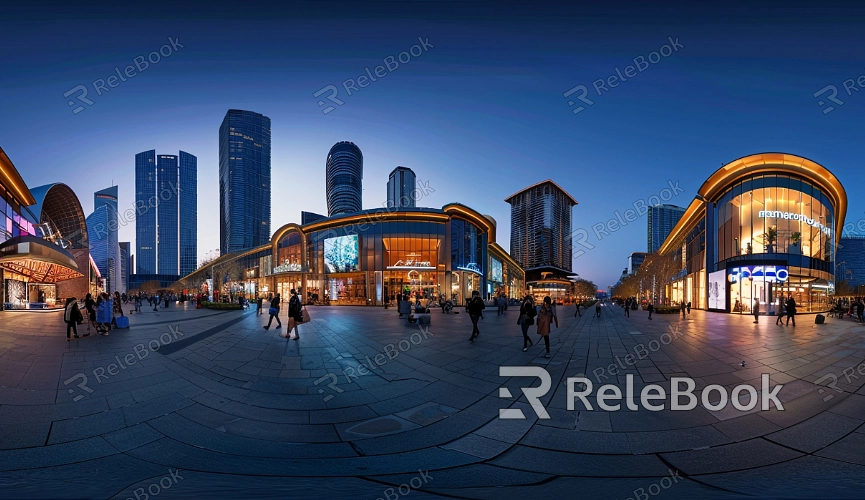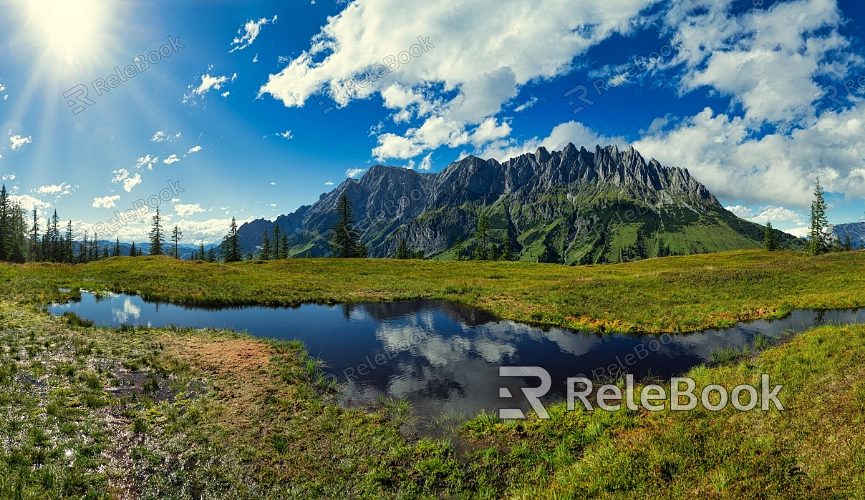What is the Best HDR Texture Resolution for Blender Rendering
The use of HDR textures is becoming increasingly common, especially in rendering processes within 3D modeling software like Blender. HDR textures provide more realistic lighting to scenes, making designs appear more lifelike. However, many designers often feel uncertain when choosing the appropriate resolution for HDR textures: a resolution that's too low might result in a loss of detail, while a resolution that's too high could consume excessive computational resources. Understanding how to select the optimal HDR texture resolution is crucial to ensuring both rendering quality and efficiency. This article will explore this topic to help you make informed decisions when rendering in Blender.

1.Understanding the Basics of HDR Texture Resolution
When choosing HDR textures, it's essential to grasp the fundamentals of resolution. HDR textures usually come in the form of environment maps, used to provide panoramic lighting for 3D scenes. The higher the resolution, the more detail it can capture, but this also increases file size and rendering time.
Resolution and Detail: Higher resolution allows for finer lighting and reflection details, which is particularly important in scenes requiring precise reflections, such as those involving glass or metal materials.
Resolution and Performance: On the other hand, excessively high resolution may lead to insufficient VRAM, thereby slowing down rendering. Thus, finding a balance between detail and performance is crucial.
2.Common HDR Resolutions and Their Use Cases
Different resolutions are suited to different scenarios. In Blender, the most common HDR resolutions include 2K, 4K, 8K, and 16K. Each resolution has its appropriate application:
2K HDR Textures: Ideal for quick previews and lighting tests in small scenes. This lower resolution is suitable for early-stage adjustments of lighting effects.
4K HDR Textures: Typically used in medium-sized scenes, providing good lighting detail without demanding too much from system resources. In most day-to-day projects, 4K resolution is sufficient.
8K HDR Textures: Best suited for complex scenes requiring high-precision lighting, such as architectural visualization or high-quality product rendering. This resolution can showcase more detail but requires a more powerful graphics card.
16K HDR Textures: Used for cinematic-level rendering or special projects requiring extremely high-resolution output. This resolution offers unparalleled detail but demands top-tier hardware and is generally reserved for situations where the ultimate visual effect is necessary.

3.How to Choose the Right HDR Resolution
Selecting the correct HDR texture resolution in Blender rendering depends on several factors, including project requirements, hardware capabilities, and rendering time.
Project Requirements: Choose the HDR texture based on the complexity of the project and the final output resolution. If it's just for preview or quick rendering, a lower resolution will suffice. For high-quality final outputs, a higher resolution may be needed.
Hardware Capabilities: The VRAM capacity and processing power of your graphics card are critical factors when choosing HDR texture resolution. If VRAM is limited, using too high a resolution might cause system crashes or render failures.
Rendering Time: Higher resolution HDR textures will increase rendering time. If time is of the essence, consider using a slightly lower resolution HDR texture to save time.
4.Tips for Optimizing HDR Texture Usage
To maintain rendering quality while enhancing efficiency, designers can employ several strategies to optimize HDR texture use.
Crop Unnecessary Areas: If the HDR texture contains unneeded parts, cropping them can reduce file size and memory usage.
Preview with Lower Resolution: When adjusting scenes, start with a lower resolution HDR texture for previews, and switch to a higher resolution version for the final render.
Appropriate Compression: By using the right compression methods, such as saving HDR textures in the EXR format, you can reduce file size without compromising quality.
In summary, selecting the best HDR texture resolution depends on the specific needs of your project, your hardware setup, and the rendering time you can afford. By carefully choosing and optimizing HDR textures, designers can achieve outstanding lighting effects in Blender rendering.
If you're looking for more advanced tools to manage and optimize HDR textures in your design workflow, Relebook offers a range of professional solutions to help you handle various resolutions with ease, enhancing your efficiency and ensuring top-notch rendering results. We invite you to explore Relebook and elevate your creative process.

